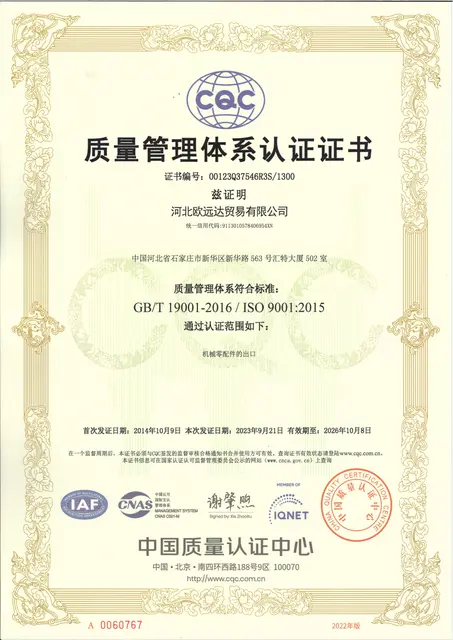Mobile:+86-311-808-126-83
Email:info@ydcastings.com
hot isostatic pressing aluminum castings
Hot Isostatic Pressing of Aluminum Castings Enhancing Strength and Durability
Hot Isostatic Pressing (HIP) is a sophisticated technique utilized to enhance the mechanical properties of aluminum castings, which are widely used in various industries including aerospace, automotive, and military applications. This innovative method addresses common challenges faced by traditional casting processes, such as porosity, inclusions, and dimensional inaccuracies, thereby improving the overall performance and longevity of the final products.
Hot Isostatic Pressing of Aluminum Castings Enhancing Strength and Durability
HIP operates by subjecting the cast aluminum to elevated temperatures and pressures in a controlled environment. During this process, the aluminum casting is placed inside a high-pressure chamber, where it is heated to temperatures typically in the range of 400 to 600 degrees Celsius. Concurrently, an inert gas, such as argon or nitrogen, is used to apply uniform pressure across the entire surface of the casting. This combination of heat and isostatic pressure causes the pores and other defects within the material to collapse, effectively densifying the casting.
hot isostatic pressing aluminum castings

The benefits of HIP are manifold. First and foremost, it significantly reduces porosity, leading to improvements in mechanical properties such as yield strength, tensile strength, and ductility. These enhancements are particularly critical in applications where safety and performance are paramount, such as in aerospace components that must withstand extreme conditions. Moreover, HIP-treated aluminum castings usually exhibit better fatigue resistance, which translates to longer service lives in demanding environments.
In addition to improving mechanical properties, HIP can also refine the microstructure of the aluminum castings. The heat treatment during the HIP process promotes the homogenization of alloying elements and reduces grain size, which contributes to superior mechanical characteristics. The improved microstructural integrity enhances not only strength but also thermal and electrical conductivity, making HIP-processed castings suitable for a broader range of engineering applications.
Furthermore, the HIP process can be effectively integrated into existing manufacturing protocols, offering manufacturers a pathway to upgrade their casting operations without the need for entirely new equipment. While there are costs associated with the HIP process, the long-term benefits, including reduced scrap rates and increased performance, often justify the investment.
In conclusion, Hot Isostatic Pressing is an invaluable technique for enhancing the quality and performance of aluminum castings. By effectively reducing porosity and refining microstructural properties, HIP ensures that cast components meet the rigorous demands of modern applications. As industries continue to seek lightweight and durable materials, the role of HIP in the aluminum casting sector will undoubtedly expand, paving the way for advancements in manufacturing technologies and product performance. The future of aluminum castings, fortified by HIP, promises to deliver innovative solutions that meet and exceed the expectations of engineers and designers alike.
-
Why Should You Invest in Superior Pump Castings for Your Equipment?NewsJun.09,2025
-
Unlock Performance Potential with Stainless Impellers and Aluminum End CapsNewsJun.09,2025
-
Revolutionize Your Machinery with Superior Cast Iron and Aluminum ComponentsNewsJun.09,2025
-
Revolutionize Fluid Dynamics with Premium Pump ComponentsNewsJun.09,2025
-
Optimizing Industrial Systems with Essential Valve ComponentsNewsJun.09,2025
-
Elevate Grid Efficiency with High-Precision Power CastingsNewsJun.09,2025











